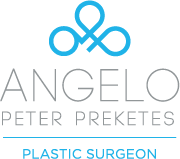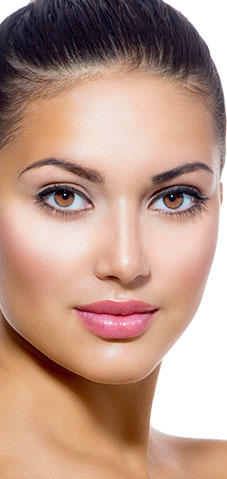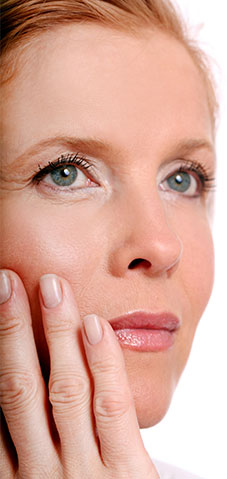Facial Procedures
Face Lift
A facelift is an aesthetic (cosmetic) surgical procedure to assist with the signs of ageing. The surgical technique will depend on your physical features and your surgeon’s method. In most cases, an incision is made commencing in the hairline at the temple, extending in a skin crease down in front of the ear, around the ear lobe and then behind the ear finishing in the hairline of the scalp. Although all surgical incisions leave scars, the aim of facelift surgery is to leave scars that are as inconspicuous as possible. Most scars fade considerably with time although there is an individual variation in healing time and scar formation. Occasionally thickened scars may develop which require specific treatment. Dermabrasion of the face, may be undertaken at the same time as the facelift. The aim of this treatment is to treat sun-damaged skin, crow’s feet around the eyes and fine lines around the mouth, which are not removed by facelift surgery.
The result of surgery does depend on the person’s age, the degree of ageing, facial skin elasticity and lifestyle.
Neck Lift
A neck lift is a surgical procedure to improve the appearance of the neck.
Neck lift procedures can help to:
- tighten loose skin
- remove excess fat
- reduce a double chin
- reduce jowls
- define the jaw line
- reduce the appearance of stringy muscle cords that run the length of the neck.
A range of neck lift procedures are available. The procedure (or combination of procedures) recommended by the plastic surgeon depend on the muscle tone, skin elasticity and body fat in the patient’s neck area. Neck lift techniques vary depending on the needs of the patient and surgeons‘ preference.
You may be fitted with a pressure bandage immediately after surgery. The pressure bandage is usually wrapped around the head to fit under the chin and cover both ears. This helps reduce the swelling and support the neck tissues as they heal.
Blepharoplasty (Eyelid Reduction)
The skin of the upper eyelids may sag and appear loose and baggy, which is a normal sign of ageing. In some cases vision is partially blocked. To assist with the visual problems the procedure of blepharoplasty is performed, which is the removal of excess skin and fatty deposits.
The appearance of dark circles, lines at the corners of the eye, crows feet or droopy eye brows are not removed during this procedure. You should always keep in mind that the desired result is improvement, not perfection.
Skin folds and fat bulges will be removed based on your individual surgical needs and your visual field being improved. Perfect symmetry cannot be guaranteed as the two sides of our faces are usually not identical with further risk of dry or watery eyes and the extreme rare risk of blindness.
Otoplasty (Ear Correction)
If you are self-conscious about the shape of your ears or how much they protrude, Otoplasty, also called pinnaplasty or “pinning back of the ears” may be the surgical procedure that you require. It is surgery that is performed to correct prominent ears by setting them back closer to the head.
The aim is to create a more pronounced fold in the central portion of the ear by remodelling the cartilage. Skin is removed from behind the ear, part of the cartilage is folded or removed, and the ear is allowed to bend naturally towards the side of the head. There are several surgical options when performing this procedure. Dr Preketes will discuss the most appropriate technique for you.
Although no major complications are expected in an Otoplasty procedure, bleeding and bruising may occur. Occasionally, a set-back ear may protrude again, necessitating a second procedure. You should follow your surgeon’s advice carefully to reduce the risk of complications. It is unrealistic to expect perfect symmetry between the two sides. If you are over 18 years of age this procedure is classified at COSMETIC, therefore you are unable to use your health fund for the hospital admission and unable to claim any associated rebate from Medicare or your fund for the Doctor or Anaesthetic fee.




